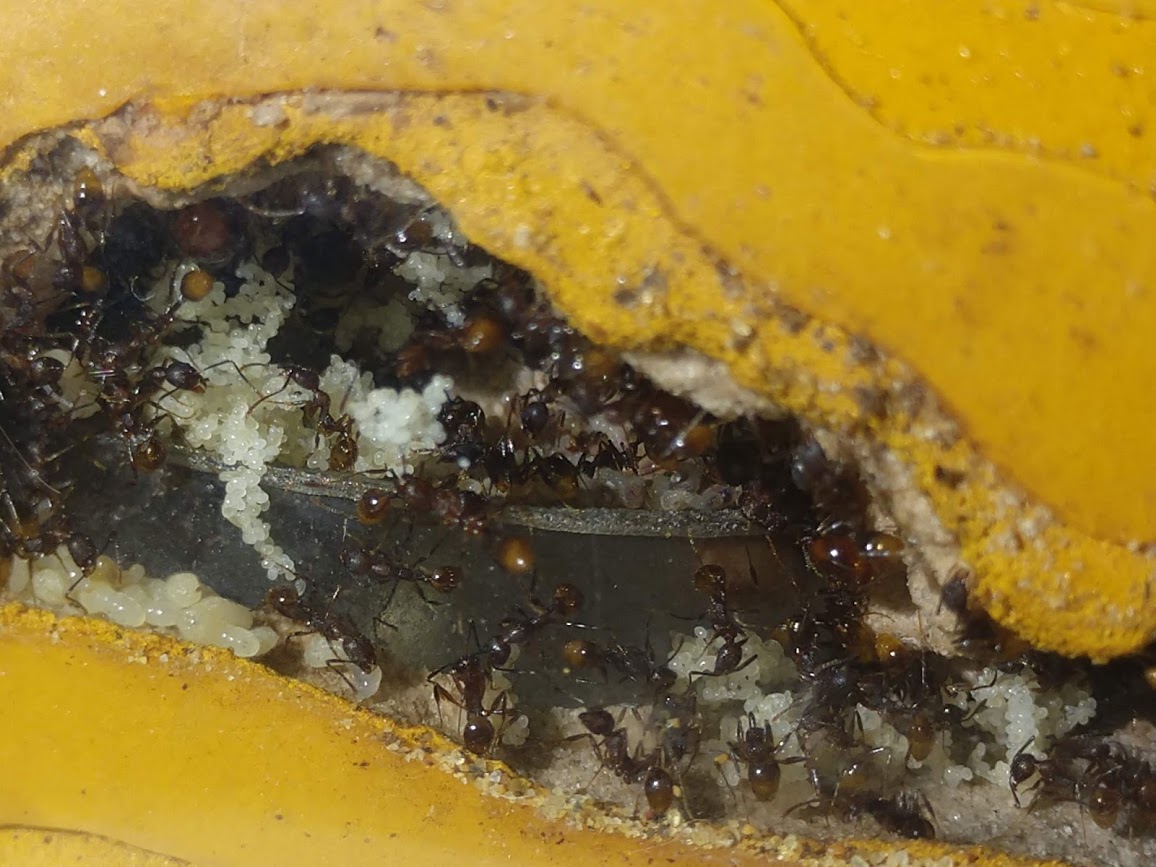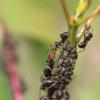Now, before you go rush to tell me about worker-queens, I know. Aphaenogaster rudis-group are notorious for having infertile dealates in their colony that act as workers. This is not about that.
Recently I took a trip to central IL to visit a friend. I had known about an alleged population of polygynous Aphaenogaster fulva present in the woods by him, but I wasn't so sure until I had seen them myself. Now, my local woods also has large populations of this species, and the two populations in the two forests were distinctly different.
My forests' colonies:
-Rarely have multiple dealates in the colony
-Have relatively small colonies (<1000 workers)
-Hibernate with alate larvae
-Are regularly hosts for A. tennesseensis
-Coexist with other Aphaenogaster species
All of that is relatively normal for A. fulva. However, the colonies from central IL are significantly different:
-Multiple dealates present in every colony, some having dozens
-Have massive colonies (some getting over 10k)
-Do not hibernate with alate larvae
-Are not hosts for A. tennesseensis
-Do not coexist with other species of Aphaenogaster
Now, while I'm unable to perform direct fertility testing, I can assume that the population in central IL is genuinely polygynous for a few reasons:
1: While Aphenogaster may have infertile dealates present in the colony, it is usually uncommon in A. fulva, and a single colony would never contain dozens, let alone every colony.
2: Aphaenogaster fulva queens are estimated to only be able to support around 1500 workers by themselves. There is no way a single fertile gyne could support colonies with tens of thousands of workers.
3: Actually, I have no idea what the deal with the alate larvae is. My best guess is that they produce far fewer alates, and potentially breed in the nest or accept newly mated queens into their colonies. This one is a bit of a tossup, though.
4: Polygynous species are not able to be hosts for parasitic species. This can be seen in Lasius, as parasitic Lasius species are unable to use L. brevicornis or L. nearcticus as hosts, as those two species are polygynous. The absence of A. tennesseensis would imply that the A. fulva colonies in central IL do have multiple fertile dealates in the colonies, as a monogynous colony would be subject to parasitism from A. tennesseensis.
5: Normally, Aphaenogaster fulva are incapable of driving out other colonies of Aphaenogaster due to their small colony size. It is very unlikely to only have one species of Aphaenogaster present in one area, as they simply do not take up enough space and/or resources to out compete the other colonies of Aphaenogaster.
Now, after making these claims/assumptions, I decided to collect a colony to observe their behavior (and because well, they seem fun to keep.) Anyways, I collected a colony and was able to obtain around 400 workers, a bunch of larvae, and 17 dealate queens. I moved them into a TarheelAnts Phalanx formicarium and fed them some crickets. Within 12 hours, they had laid a LOT of eggs. Certainly more than any single queen could hope to lay overnight. Take a look:

Now I've had this colony for less than a week, so who knows what will come of them in the future. I'm excited to see what alates will be like in the colony, since these strangely had no alate larvae present in the nest as I mentioned before.
One possibility that was brought up to me by AnthonyP163 is that this could be a new/undescribed species. While I find it unlikely, it is an interesting thought, and I'll be sending a worker to him so he can look at it under a microscope and potentially send it in somewhere for even closer imaging. While to the naked eye these ants seem identical to normal A. fulva, it could be a case of a few hairs, or spine length, or something else. I'm really not sure.
Now to wrap it up, here's a video of the colony in all their glory:
I'm interested to hear any other theories you guys have on these strange ants. Also, should I make a journal on them? I might if they turn out to have any more interesting quirks that I don't see just yet.
Edited by CheetoLord02, August 28 2020 - 8:22 AM.





















